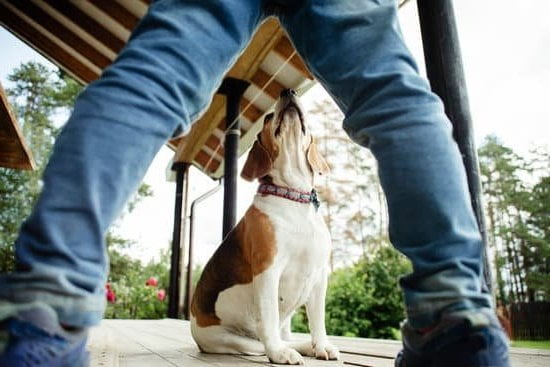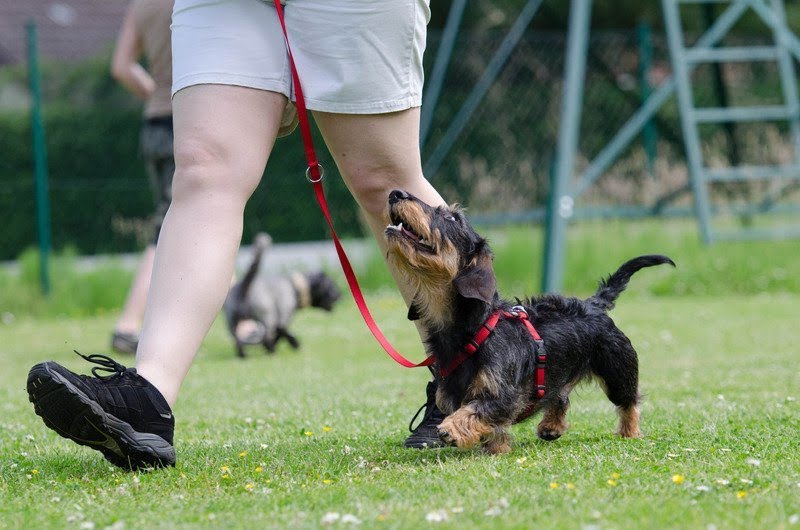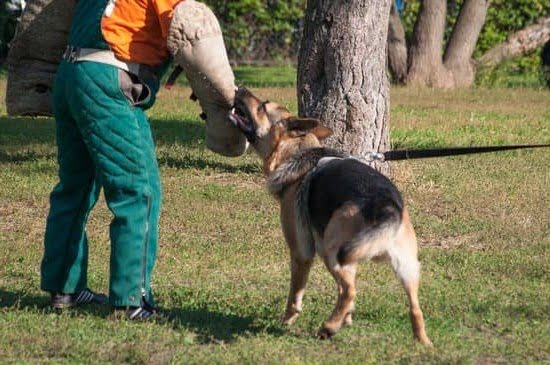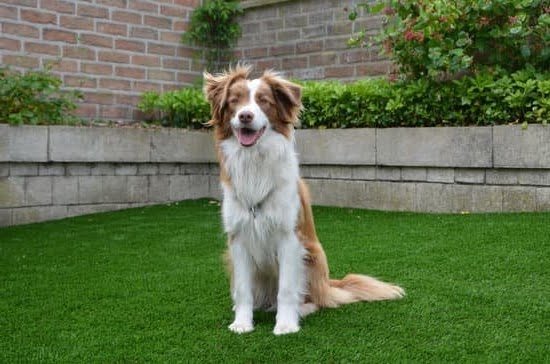Are you wondering how to train 2 dogs not to fight? It can be a challenging situation for pet owners to manage aggression between their furry companions. Understanding the root cause of dog aggression is essential in addressing this issue effectively. Aggression in dogs can stem from various factors such as fear, territorial behavior, or resource guarding.
Identifying triggers that set off your dogs is crucial in preventing conflicts. Recognizing what prompts aggressive behavior in your pets allows you to proactively manage situations and avoid potential confrontations. It could be food, toys, territory, or even attention that trigger fights between your dogs. By understanding these triggers, you can take steps to prevent aggression before it escalates.
Establishing yourself as the pack leader is fundamental in managing canine aggression. Dogs are pack animals and instinctively look for a leader to guide them. By establishing leadership through consistent training and clear communication, you can help create a harmonious environment for your pets. Setting boundaries and enforcing rules will show your dogs that you are in control and reduce the likelihood of conflicts between them.
Identifying Triggers
Dogs, like humans, have their own triggers that can lead to aggression or fights. By understanding and identifying these triggers, pet owners can better address and manage the behavior of their furry companions. Here are some common triggers that may set off dogs and escalate into fights:
- Resource guarding: Dogs may become possessive of food, toys, or other items leading to aggression towards each other.
- Territorial behavior: Dogs may feel threatened when another dog enters their perceived territory, such as their home or yard.
- Fear or anxiety: Dogs may react aggressively when they feel scared or cornered by another dog’s presence.
To prevent fights between dogs, it is crucial for pet owners to be vigilant in recognizing these triggers and addressing them proactively. One essential step in training two dogs not to fight is creating a safe environment where potential triggers are minimized. This can involve managing resources such as separate feeding areas and providing each dog with their own toys to prevent conflicts over possessions.
Moreover, observing your dogs’ body language and behavior cues can also help in identifying triggers before they escalate into fights. Look for signs of tension such as raised hackles, stiff posture, growling, or intense staring between the dogs. By being attentive to these warning signals, you can intervene early and prevent conflicts from escalating. Remember, early intervention is key in ensuring a harmonious relationship between your canine companions.
Establishing Leadership
Understanding Pack Dynamics
Establishing yourself as the pack leader is crucial when it comes to managing a multi-dog household. Dogs are pack animals by nature, and they look for a clear leader to follow. Without a designated leader, dogs may try to assert dominance over each other, leading to fights and conflicts. By understanding pack dynamics, you can effectively establish yourself as the leader of the pack and prevent power struggles between your dogs.
Setting Boundaries and Rules
One of the key ways to establish yourself as the pack leader is by setting clear boundaries and rules for your dogs to follow. This includes rules around feeding time, walks, playtime, and interactions with each other. Consistency is key when enforcing these rules so that your dogs understand what is expected of them. By providing structure and guidance, you can help prevent conflicts from arising in your home.
Building Trust and Respect
Building trust and respect with your dogs is essential in establishing yourself as the pack leader. Positive reinforcement techniques, such as rewarding good behavior with treats or praise, can help strengthen the bond between you and your pets.
Consistent training sessions that focus on basic obedience commands can also reinforce your position as the leader. By earning your dogs’ trust and respect, you can create a harmonious environment where they feel secure and less likely to engage in aggressive behaviors towards each other.
Implementing Obedience Training
Obedience training plays a crucial role in preventing fights between two dogs. By teaching basic commands and impulse control, pet owners can effectively manage their dogs’ behavior and minimize potential conflicts. In this section, we will discuss how to train 2 dogs not to fight through obedience training techniques.
Establish a Training Routine
Consistency is key when it comes to obedience training. Set aside time each day to work on obedience exercises with both of your dogs. Start with short training sessions and gradually increase the duration as your dogs become more proficient. By establishing a routine, you can create a sense of stability and predictability for your pets, which can help reduce anxiety and prevent aggression.
Teach Basic Commands
Basic commands such as sit, stay, come, and leave it are essential for managing dog behavior. Teach these commands to each of your dogs individually before practicing them together. Use positive reinforcement techniques such as treats, praise, and play to motivate your dogs to follow commands. Consistent practice in different environments will help solidify their understanding of these commands and enhance their responsiveness in challenging situations.
Focus on Impulse Control
Impulse control is especially important when training multiple dogs in the same household. Teach your dogs self-control by practicing exercises that require them to wait patiently for rewards or follow instructions despite distractions. For example, have each dog wait for its turn to eat or go outside on command. By improving their impulse control, you can help prevent impulsive reactions that could lead to fights between your furry companions.
By incorporating obedience training into your routine and focusing on basic commands and impulse control, you can successfully train 2 dogs not to fight. Remember to be patient and consistent with your training efforts, and seek professional help if needed to address any underlying behavioral issues that may contribute to aggression between your pets.
Socialization Techniques
Socialization between two dogs is a crucial aspect of preventing fights and promoting harmony in a household with multiple pets. When introducing your dogs to each other, it is important to do so gradually and in a controlled manner. Start by allowing the dogs to briefly sniff each other while on-leash in a neutral territory. This initial interaction should be supervised to ensure that neither dog displays aggressive behavior.
Once the dogs show signs of tolerance towards each other, such as calm body language and lack of growling, you can proceed with more structured activities. Engage them in parallel walks or play sessions where they are near each other but not forced to interact directly. Positive reinforcement techniques, such as rewarding good behavior with treats or praise, can help create positive associations between the dogs during these interactions.
It’s also essential to expose your dogs to different environments and situations that may trigger aggression. Gradually introduce them to other animals, such as cats or small dogs, under controlled conditions. Monitor their reactions closely and intervene if any signs of aggression arise. By desensitizing your dogs to new stimuli and experiences, you can help reduce the likelihood of conflicts between them.
| Socialization Techniques | How to Introduce Your Dogs |
|---|---|
| Gradual introduction in a neutral territory | Structured activities like parallel walks |
| Positive reinforcement for good behavior | Expose them to different animals under supervision |
Breaking Up Fights Safely
When it comes to managing two dogs that are prone to fighting, knowing how to break up fights safely is crucial. The first step in this process is to avoid using your hands to separate the dogs, as this can result in serious injuries for both you and the dogs.
Instead, try distracting them by making a loud noise or using a spray bottle filled with water to redirect their attention. It’s also important to stay calm and avoid panicking, as this can escalate the situation further.
Another effective strategy for separating fighting dogs is to use a barrier such as a baby gate or a piece of furniture to physically separate them. This can give you the opportunity to safely remove one dog from the situation without putting yourself at risk of being bitten.
Additionally, you can try gently but firmly grabbing each dog by their hind legs and pulling them away from each other in opposite directions. This can help prevent them from inflicting any harm on each other while allowing you to regain control of the situation.
In some cases, it may be necessary to use a tool such as a break stick specifically designed for safely breaking up dog fights. A break stick can be inserted between the jaws of one of the dogs and twisted gently to release their grip.
However, it’s important to remember that using a break stick should only be done as a last resort and with caution, as improper use can cause injury to the dogs. By implementing these strategies and being prepared for potential conflicts, you can effectively manage any confrontations between your dogs and ensure their safety and well-being.
Creating a Peaceful Environment
Creating a harmonious environment for your two dogs is essential in preventing conflicts and avoiding fights. Managing resources effectively plays a significant role in maintaining peace between your pets. Here are some strategies to help you cultivate a peaceful coexistence between your canine companions:
- Separate Feeding Areas: Providing separate feeding stations for each dog can prevent resource guarding and food-related aggression. This allows each dog to eat without feeling threatened or challenged by the presence of the other.
- Individual Toys and Beds: Ensuring that each dog has their own designated toys, beds, and personal space can reduce competition and minimize potential conflicts over possessions.
- Supervise Playtime: When allowing your dogs to interact and play together, closely monitor their behavior. If play escalates into roughhousing or tension starts to build, intervene calmly to redirect their attention and avoid potential disputes.
In addition to managing resources, it is crucial to establish clear boundaries and rules within your household to prevent power struggles and conflicts between your dogs. By setting up a structured environment and promoting positive interactions, you can create a peaceful atmosphere where both dogs feel secure and respected.
Remember that consistency is key in reinforcing good behavior and preventing conflicts between your dogs. By consistently applying positive reinforcement techniques, maintaining leadership, and prioritizing proactive management strategies, you can foster a harmonious relationship between your pets based on mutual respect and understanding.
Consistency Is Key
Consistency is crucial when it comes to training multiple dogs to prevent fighting. Dogs thrive on routine and predictability, so maintaining a consistent approach in your training techniques is essential. This means using the same commands, rewards, and correction methods every time you interact with your dogs. By being consistent, you will reinforce the behaviors you want to see in your dogs and reduce the likelihood of conflicts between them.
Building a strong bond with each of your dogs individually is also key to preventing fights. Spend quality one-on-one time with each dog to strengthen your relationship with them. This will help them feel secure and loved, reducing any feelings of competition or jealousy that could lead to aggression. Additionally, bonding activities such as playtime, grooming, and training sessions can also help create positive associations between you and your dogs.
In addition to consistency and building strong bonds, it is important to provide mental and physical stimulation for your dogs. A well-exercised and mentally engaged dog is less likely to engage in negative behaviors like fighting. Make sure each dog gets enough exercise through walks, runs, or playtime.
Engage their minds with puzzle toys, training exercises, or interactive games. By keeping your dogs physically and mentally satisfied, you are creating a harmonious environment where they are less likely to resort to aggression towards each other.
| Consistency Tips | Bonding Activities |
|---|---|
| Use the same commands consistently | One-on-one playtime |
| Reward good behavior promptly | Grooming sessions |
| Avoid reinforcing negative behaviors | Training exercises together |
Seeking Professional Help
In some cases, despite our best efforts and commitment to training, managing, and socializing our dogs, the behavior of dog aggression may persist. When all else fails, seeking professional help from a certified dog trainer or behaviorist is a crucial step towards resolving conflicts between your pets. These experts have the experience and knowledge to assess the specific dynamics at play and provide personalized strategies on how to train 2 dogs not to fight.
Dog trainers and behaviorists can conduct a thorough evaluation of your dogs’ behaviors, triggers, and responses to determine the root cause of their aggression. With this valuable insight, they can tailor a training plan that addresses these underlying issues effectively. Additionally, these professionals can guide you on implementing advanced techniques for obedience training, socialization, leadership establishment, and conflict resolution.
Moreover, consulting a trainer or behaviorist is beneficial not only for preventing fights between your dogs but also for enhancing their overall well-being and quality of life. These experts can offer guidance on creating a peaceful environment at home, managing resources like food and toys effectively, interpreting canine body language signals accurately, and building a stronger bond with your pets.
Remember that seeking professional help is not a sign of failure but a proactive step towards ensuring harmonious relationships between your furry companions.
Frequently Asked Questions
How Do I Stop My Two Dogs From Fighting?
To stop your two dogs from fighting, you can try to identify the root cause of their aggression. It could be due to food, toys, territory, or even attention. Implement training techniques to establish yourself as the leader and set boundaries for acceptable behavior.
How Do I Train My Dog Not to Fight Each Other?
Training your dogs not to fight each other requires patience, consistency, and positive reinforcement. Start by teaching them basic commands like “sit,” “stay,” and “leave it.” Gradually work on desensitizing them to triggers that lead to fights and redirect their focus onto more appropriate behaviors.
Can Two Dogs That Fight Live Together?
Two dogs that fight can potentially live together harmoniously with proper management and training. It is essential to address any underlying issues causing the aggression and create a structured environment for both dogs. Consult with a professional dog trainer or behaviorist for guidance on modifying their behavior and fostering a peaceful coexistence.

Welcome to the blog! I am a professional dog trainer and have been working with dogs for many years. In this blog, I will be discussing various topics related to dog training, including tips, tricks, and advice. I hope you find this information helpful and informative. Thanks for reading!





